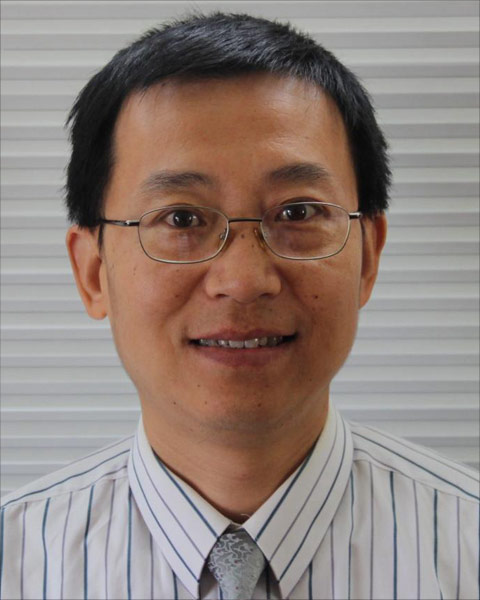Tinnitus and Hyperacusis (TH)
PP1405 - Does Sound Treatment Affect Tinnitus Severity and Sound Tolerance?
- ER
Elizabeth Rivera Rosario, BS
Graduate Student Researcher
University at Buffalo
Buffalo, New YorkFinancial Disclosures: I do not have any relevant financial relationships with anything to disclose.
Non-Financial Disclosures: I do not have any relevant non-financial relationships with anything to disclose. 
Julia Conenna, BS (she/her/hers)
Graduate Student Researcher
University at Buffalo
University at Buffalo
Brooklyn, New YorkFinancial Disclosures: I do not have any relevant financial relationships with anything to disclose.
Non-Financial Disclosures: I do not have any relevant non-financial relationships with anything to disclose.
Wei Sun, PhD
Associate Professor
University at Buffalo
Buffalo, New YorkI do not have any relevant financial / non-financial relationships with any proprietary interests.
- II
Ieda Ishida, PhD
Research Audiologist
Sonova CanadaI do not have any relevant financial / non-financial relationships with any proprietary interests.
- CR
Carolina Rubiano, BS (she/her/hers)
Senior Validation Specialist
Sonova Canada
Universidad Nacional de Colombia
Kitchener, Ontario, CanadaI do not have any relevant financial / non-financial relationships with any proprietary interests.
- ID
Ivy J. Dimaculangan, BA (she/her/hers)
SUNY University at Buffalo
SUNY University at BuffaloI do not have any relevant financial / non-financial relationships with any proprietary interests.
- JQ
Jinyu Qian, PhD (she/her/hers)
VP, Innovation Centre Toronto
Sonova Canada, CanadaFinancial Disclosures: I do not have any relevant financial relationships with anything to disclose.
Non-Financial Disclosures: I do not have any relevant non-financial relationships with anything to disclose. - CW
Celine Wan
Undergraduate Student
The State University of New York at BuffaloI do not have any relevant financial / non-financial relationships with any proprietary interests.
Lead Presenter(s)
Presenter(s)
Contributor(s)
A clinical trial study is being conducted to evaluate the effects of hearing aids (HA) amplification with/without built-in noise generator (noiser) on chronic tinnitus and sound tolerance. Tinnitus subjects with mild to moderately-severe hearing loss with no previous HA experience have been randomly assigned for a cross-sectional study to experience amplification-only and amplification+noiser conditions for one month each, followed by one month of no intervention. Tinnitus Functional Index (TFI) questionnaires evaluated tinnitus severity before and after each condition. Preliminary results (n= 10) are showing a trend of reduced tinnitus severity and improved sound tolerance in both conditions.
Summary:
Rationale
Tinnitus can be a devasting disorder affecting people’s quality of life. Although hearing aids (HA) have been found to alleviate tinnitus, the effects and mechanism of HAs with or without a built-in sound generator on tinnitus are unclear. The purposes of this study are to assess how HA amplification and an added built-in noise generator affects tinnitus, and whether sound tolerance improvement is correlated with tinnitus perception changes. We expect that HA amplification with and without built-in noise generator will improve tinnitus severity and sound sensitivity.
Experimental design
Adults (mean age: 63.4 years) with mild to moderately-severe hearing loss who reported chronic bothersome tinnitus have been recruited to the study (n=24). We evaluated tinnitus severity using the Tinnitus Functional Index (TFI) questionnaire, being the inclusion criteria a TFI above 20 in two consecutive evaluations (2-3 weeks apart). Hearing assessment was done with pure-tone- and speech audiometry. Middle and inner ear functions were evaluated using tympanometry and otoacoustic emission. Qualified subjects were fitted with bilateral HAs and randomly assigned to either the HA amplification-only condition or HA amplification+noiser condition. The instruction for the amplification condition was to wear HAs for more than five hours each day, and for the HA amplification+noiser condition was to wear HAs for more than five hours each day, with the noiser on for at least two hours. After one month experiencing the initial condition, the subjects then switched conditions, and experienced the alternate condition for another month. Sound tolerance was evaluated using Loudness Discomfort Level (LDL) before, during, and after intervention.
Results
We evaluated TFI five times for each subject: twice before, twice during and one month after they returned the HAs. Preliminary data analysis of this ongoing study (n=10) shows a trend for the TFI to decrease after one month of HA usage in either condition. There is also a trend showing increased LDLs after HA usage for subjects with originally reduced sound tolerance, suggesting that sound tolerance may also improve with HA usage. However, in some subjects (n=2), TFI seemed to show a tendency to gradually increase one-month after removing the HAs, suggesting that the continuous usage of HAs may be beneficial for tinnitus suppression.
Conclusions
Our preliminary TFI and LDL results analysis suggest a trend for an overall improvement in tinnitus patients with HA usage. However, a long-term follow-up study is required to understand whether HAs have a permanent or temporary effect on tinnitus and sound tolerance change.
Learning Objectives:
- Upon completion, participants will be able to identify the effects of hearing aids and built-in noise generator on tinnitus severity.
